
It should come as no surprise to our readers to hear that we’re big fans of Japan. Pretty much everything here works as it should, the food is amazing, the culture rich, and people are on the whole likeable and friendly. But there are times when Westerners, and Japanese who have spent any amount of time abroad for that matter, realise that Japan gets some things not just wrong but horribly wrong.
So join us after the jump as we redress the balance no doubt offset by our constant admiration of Japan by discussing the 10 little things that drive us nuts in this otherwise great country.
The following is for the most-part written from a Western perspective, and the collective thoughts of both our own staff at RocketNews24 who have around 100 years’ experience of living in Japan between us, and comments shared by foreigners on dozens of online forums. As the office Brit and thus having been born with a master’s degree in complaining (and revelling in doing so), it fell to yours truly to put together this short list of irks and “seriously Japan, WTF?” moments. Read, laugh, nod along or disagree completely – this is all intended as a fun poke at a country we love, but it is nevertheless 100 percent true.
Ten things Japan gets horribly wrong
1. Movie releases
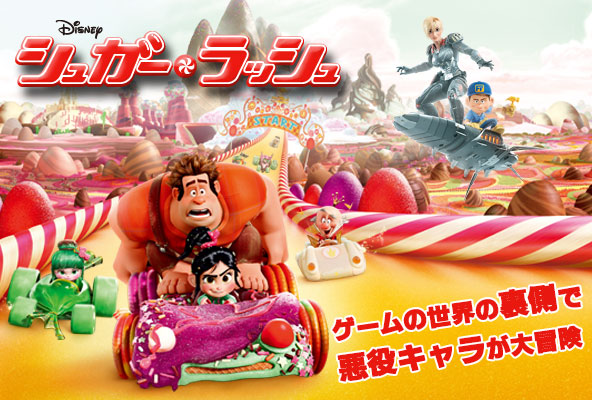
Look, we get it, it takes time to prepare subtitles or record new voice tracks for foreign films, but for movie buffs – both foreign and Japanese alike – the wait for new movies to arrive in Japan can be absolute agony, and there seems to be no rhyme or reason to it whatsoever, with some releases taking a couple of months while others arrive the best part of a year late. Other Asian countries like Taiwan and Singapore often get to enjoy Hollywood blockbusters barely weeks after their release in America and Europe, but Japanese moviegoers routinely have to wait until long after films have been made available to rent or buy on Blu-ray and DVD (and even posted on naughty torrent sites to download) in other countries before they appear on the silver screen in Japan.
Here are a few examples of recent flicks, and their respective release dates, that Japan had to sit around waiting for:
Django Unchained
US: December 25, 2012. Japan: March 1, 2013Man of Steel
US: June 10, 2013. Japan: August 30, 2013Seeking a Friend for the End of the World
US: June 18, 2012. Japan: April 27, 2013The Avengers
US: April 11, 2012. Japan: August 14, 2012Up
US: May 29, 2009. Japan: December 15, 2009Wreck it Ralph
US: November 2, 2012. Japan: March 23, 2013The World’s End
US: August 23, 2013. Japan: March 1, 2014
Some Western movies that make it over to Japan far quicker, but the majority seem to take an age. In short, being a movie fan in Japan kind of sucks.
2. Christmas
Image: Okashi Moi
Now that Halloween has come and gone, Japan is already switching to Christmas mode. Shop-fronts are being decorated with tinsel, trees are popping up in hotel lobbies, and you’ll find a plastic Colonel Sanders dressed in a Santa outfit outside many branches of KFC in the city. But for the build-up and affection for the festive season Japan seems to have, when it comes to actually delivering, Christmas here is pretty awful.
Since this is not a Christian country, Christmas Day is just another working day in Japan, so you won’t hear of many families getting together to exchange gifts first thing in the morning, or spending the afternoon sitting by the tree sipping on wine and eggnog. In fact, after December 24 – which is considered to be one of the biggest days of the year for romance and dating – everyone pretty much forgets about the season.
That is, of course, except for “Christmas Dinner”, which since the 1970s has become almost completely synonymous with Kentucky Fried Chicken. That’s right, boys and girls, Japan replaces the biggest and best roast dinner of the year with a family-sized bucket of the colonel’s finger-lickin’ chicken, with even hamburger chains like Japan’s own MOS Burger serving only chicken on the big day, and sometimes taking orders well in advance. Sure, there’s no rule set in stone saying that everyone in the world should eat roast turkey and stuffing on December 25, and fried chicken with the family can be a ton of fun, but after explaining to a Japanese friend of mine that Kentucky for Christmas is to Westerners what presenting a Japanese family with a round of Big Macs instead of traditional New Year’s food on January 1 would be like, they agreed that Kentucky Fried Christmas is probably pretty depressing for foreigners.
3. Cheese
Image: Charlotte’s Cheese Dreams
And what Christmas dinner would be complete without a nice big cheese board at the end of it? It may sound like an incredibly minor quibble, but Japan really just doesn’t “get” cheese. Sure, you can find some decent Gouda or Camembert if you go to some more up-market stores, but the vast majority of the fromage you’ll encounter in Japan is heavily processed, wrapped in plastic and fairly tasteless.
Sliced and pre-grated cheese, tubs of parmesan to sprinkle on pasta and spreadable Kiri/Philadelphia cheeses are pretty much everywhere in Japan, but even if you order a cheese platter in a swanky restaurant, when you see the pathetic slivers of the stuff they dish out you’ll wonder whether wartime rationing is back on again, not to mention why the kitchen staff decided that a piece of rubbery cheddar the size of your thumb was worthy of a spot on the board.
If you do some research you can find some quality cheese online or at specialist stores, but be prepared to pay up to twice what you would in the US or Europe. Oh, cheese, how we miss you.
4. Rented accommodation and the cost of moving house
Image: Inlink
Moving house is never cheap regardless of the country you live in, and with the cost of land so high in Japan it’s little wonder that even tiny plots the size of the average American backyard are so expensive. But even renting an apartment in Japan can cost a small fortune, and we’re not just talking about monthly fees, either. If you’re arriving in Japan for the first time, or your employer has provided you with temporary accommodation and you’re looking for something more permanent, you’ll be needing to hand over plenty of cash before you get the keys to your new place.
Usually when you sign up to rent an apartment in Japan, you’ll need enough money to cover:
– the first month’s rent up-front, naturally.
– a “shikikin” security deposit. Again, this is also common elsewhere. This payment is usually mostly refundable at the end of a tenancy and covers any damage to the property during your stay, along with anything that is replaced as a matter of routine such as tatami matting, shouji paper doors and the like. This payment is usually equal to around one or two months’ rent.
– “reikin” gratuity. And here we meet the payment that leaves most foreigners scratching their heads. Written with the kanji characters 礼 “thanks” and 金 “money”, reikin is paid by the renter to the landlord and is not in fact some kind of cashback incentive to attract new tenants. That’s right, if you want to move into an apartment, in some cases you have to pay the landlord up to two months’ rent as a “thank you” before you spend even a single night in there. Oh, and you won’t get a penny of it back, either.
– letting agency fees. After all, the people who take care of all the paperwork and advertise the property in their window or online have to make money somehow. Throw in roughly a month’s rent here, too.
– Home/fire insurance. This of course varies from property to property, but most letting agencies require tenants to sign up for at least a basic insurance plan covering damage in the event of a fire or earthquake.
Supposing that the average one-room, inner-city Tokyo apartment like the one pictured above costs around 60,000 yen (US$610) per month, adding up the individual costs of simply moving into an apartment (excluding transportation costs, movers’ fees etc), you’re looking at a minimum of around $2,500 right off the bat. Although many property owners and estate agents are now coming to realise that compulsory gratuities are incredibly old-fashioned and ask only for partially refundable security deposits, there are still nevertheless hundreds of thousands of landlords who demand a non-refundable cash payment just for the privilege of, well, paying them cash every month to live in their property.
5. Bureaucracy
Image: andplus
All this talk of silly traditions and long-standing rules like gratuities paid to landlords brings us nicely onto the general theme of bureaucracy in Japan. We know that this is technically a list of things that Japan gets wrong, so what we’re essentially saying here is that Japan gets bureaucracy so very “right”, in that it positively excels at making inane processes even more laborious and painful, and that changing even a single rule requires a Herculean effort.
We realise that part of the reason why we can enjoy living in a country like Japan where everything runs so smoothly – trains arriving on time every single day; first-class customer service; everything from scheduled roadworks and deliveries being carried out bang-on-time with zero fuss – is because there are so many rules and expected standards here. As large-breasted country singer Dolly Parton once quipped, “If you want the rainbow, you have to put up with the rain,” and she’s right. But when it comes to bureaucracy in Japan you’d better bring a rain coat, umbrella, and maybe even a change of clothes, because when it rains it positively pours.
Going to open a bank account? Even if you show up with your application form filled out in perfect Japanese, a valid residency card, passport, Japanese driver’s licence, a bunch of recent utility bills, passport photos, birth certificate and a priest and a lawyer who can vouch for both your identity and character, without your hanko – a tiny little name stamp used to “sign” official documents and that anyone could have made up – you won’t get anywhere. Why? Because it’s the rules! Try to explain to your boss that a return plane ticket actually works out cheaper than buying a one-way and that your company could save money by bending the rules this once, and you’ll be agreed with and then immediately told “no”. Because it’s the rules. Suggest a minor change at work and the bosses who’ve “done it this way for years” will suck air through their teeth while coworkers squirm awkwardly in their seats wishing you hadn’t made a fuss. When it comes to Japan, change does not come easily – and not without vast amounts of paperwork and hoops jumped through – be it in the government or working life, and people often view those who try to affect it as individuals to be wary of as they aren’t pulling in the same direction as everyone else.
They say that if the West invented bureaucracy then Japan perfected it. We don’t know who “they” are, but they’re right.
6. Packaging
Image: Mochikihi
We’re not talking about traditional Japanese packaging or beautiful gift-wrapping here – that’s fantastic – we’re talking about Japan’s fondness for going crazy with the plastic and sealing every possible consumer product in its own air-tight prison. Japan may well be well ahead of many Western countries in requiring its citizens to separate their waste into burnables, plastics, bottle, glass, cans, and paper (if it’s not in the correct bag or box it won’t be collected), but it still gets through plastic like you wouldn’t believe.
Buy a bag of 20 rice crackers to snack on during movie night and you’ll soon find yourself with an enormous pile of plastic as every single cracker comes in its own wrapper. Grab a tube of Chipstar – Japan’s own miniature version of Pringles – and when you pop the top you’ll discover that the chips inside are in fact sealed within a plastic wrapper, which you then have to remove from the tube and open, leaving you with a regular, if elongated, bag of chips (which begs the question “Then why bother with the tube in the first place?”), or awkwardly decant them back into the cardboard tube, which usually ends with the chips going everywhere or refusing to go back in properly. Japan, we Westerners like our chips and our rice crackers to be crisp and delicious, too, but you’re killing us – and the planet, come to think of it – with the plastic here, so give it a rest will you?
7. Art and cultural exhibits

If you’re fortunate enough to live in the (relative) countryside and a big exhibit comes to a nearby museum or art gallery, you’ll probably have a great time. But if you’re in pretty much any big city and want to check out the works of Turner, Michelangelo, or even Paul Klee when they come to town, expect to lean, peer and crane your neck to see past the enormous crowds, or else be swept along either by the constantly moving lines of visitors or by curators whose job it is to ensure that guests view the artwork while pretty much in motion to allow the next patron a look. No time for quiet contemplation here – big names pull in big crowds and at the end of the exhibit you’ll feel like you just stepped off a convey belt at the end of a Disneyland attraction rather than having imbibed some culture. As our native Japanese writer Kay comments, “Exhibitions here are so incredibly crowded that I rarely want to go.” We can’t blame her in the slightest for feeling that way.
8. Money and ATMs
Image: Smartplanet
Being the home of technology, you might expect everyone in Japan to be paying for their groceries by having their retinas scanned by now, or at least swiping a card of some sort. There are a number of outlets that accept payment via credit card or even from pre-paid commuter passes for smaller items, but Japan is still very much a cash society and people feel uncomfortable walking around with less that $100 in their wallet or purse at any one time, particularly on weekends. Why the weekend? Well, aside from the fact that there’s fun to be had and so many things to buy, the majority of ATMs at banks – not just the banks themselves but the machines you withdraw money from – either close completely (literally–a little metal shutter comes down) or charge customers to withdraw their own cash.
Every weekday evening at around 6 p.m., or before the weekend or a public holiday, it’s common to see people rushing into ATM vestibules, or “service corners” as they’re called, to withdraw enough cash to see them through until the next working day. Many pubs and bars are strictly cash only, and even debit cards – where the money comes directly out of your account rather than you paying the bill off later – are still rare. If you want us to help the economy out, Japan, please let us get at, and spend, our money whenever we want to…
9. Heating and insulation
Image: Livedoor Blog
We know, we know: houses in Japan are thin and poorly insulated because they’re designed to be as light as possible in order to better withstand earthquakes. But that doesn’t mean they’re don’t get insanely cold in winter and are miserable to be in.
A lack of central heating means running an air conditioner, hiding under a kotatsu, huddling a “hot carpet” heated rug, or even using a kerosene-burning stove indoors–all the while opening the door or window to ventilate the room (and losing heat in the process) every hour to avoid breathing in vast amounts of carbon monoxide–to keep warm. When you’re going to bed wearing socks, a sweater and a wooly hat as well as your usual pyjamas, or your showers take 10 minutes longer than they should because you can’t bear to turn the hot water off and venture out into the cold again, you know something’s not quite right. We’re all for safety, but we’re also hoping and praying that one day science will come up with a material that’s ultra-light, super-insulating and affordable, and that Japan starts building houses out of it. Brrr.
10. Television
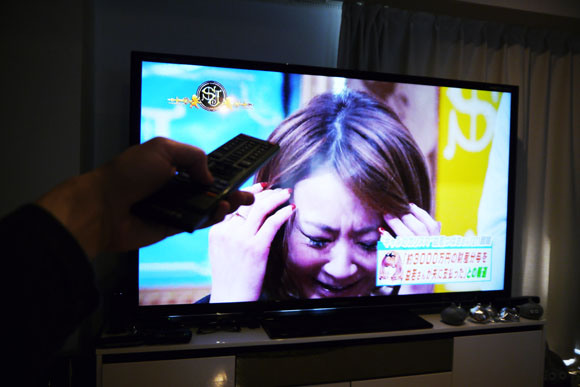
“I tried. I really tried to like it,” quoth one of our American writers here at RocketNews24, “but there are only so many shows I can sit through where they eat something, switch to a close-up of someone’s shaky hand holding the food, wait three seconds, then someone shouts ‘umai!’” We hear you loud and clear, good sir.
Japan may have brought us some quality anime over the years, and even a handful of dramas that fans of Japan love with a passion, but much of programming here is seriously bad. Dull cooking shows, variety chat shows, slapstick comedy involving people wearing wigs, bald caps, giant fake eyebrows and plastic noses, travel and food shows where every dish sampled is an absolute triumph and yet still a complete surprise… If you’re into variety shows with panels of the same B-list celebrities week after week, each with carefully crafted lines and jokes to reel off (and reactions to others’) and audience members shouting “Eeeeeee~!” to express their amazement and disbelief at least ten times per show – all presented in a format that looks like the network just splashed out on some new graphics software and is damn well going to get its money’s worth – then you’re in for a real treat. The rest of us, meanwhile, make a point of switching our TV sets on only when we know there’s a show starting that we especially want to see or when we’ve run out of videos of cats to watch online. Sorry, Japan, but you get TV so very, very wrong.
And that’s about it for our list of pet peeves. We admit that in the grand scheme of things they matter not a jot and life here in Japan is still pretty good, but it also feels good to get it all out once and for all. Let us know in the comments section if there’s anything about Japan you’d also like to get off your chest. Remember, it’s not moaning if we share as a group; it’s catharsis.
And if that was too much negativity for you, be sure to come back soon when we’ll be introducing our “10 things that Japan gets awesomely right”. See, we’re not entirely miserable!
(Update: No need to wait – click here now to see the other side of the coin.)
Title image: Raw Store
[ Read in Japanese ]

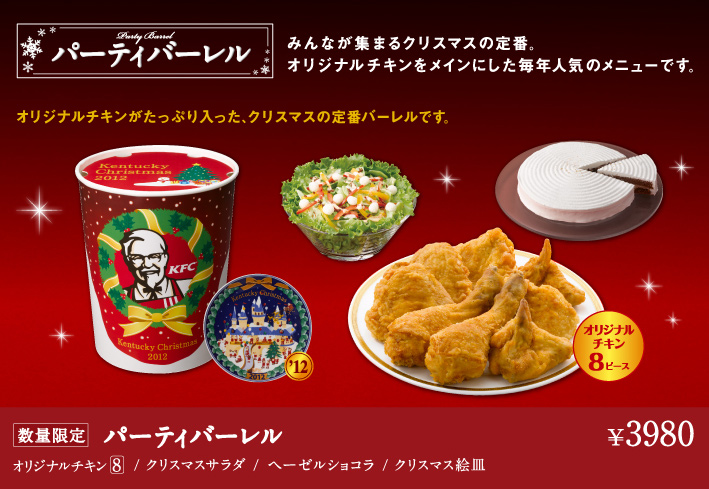
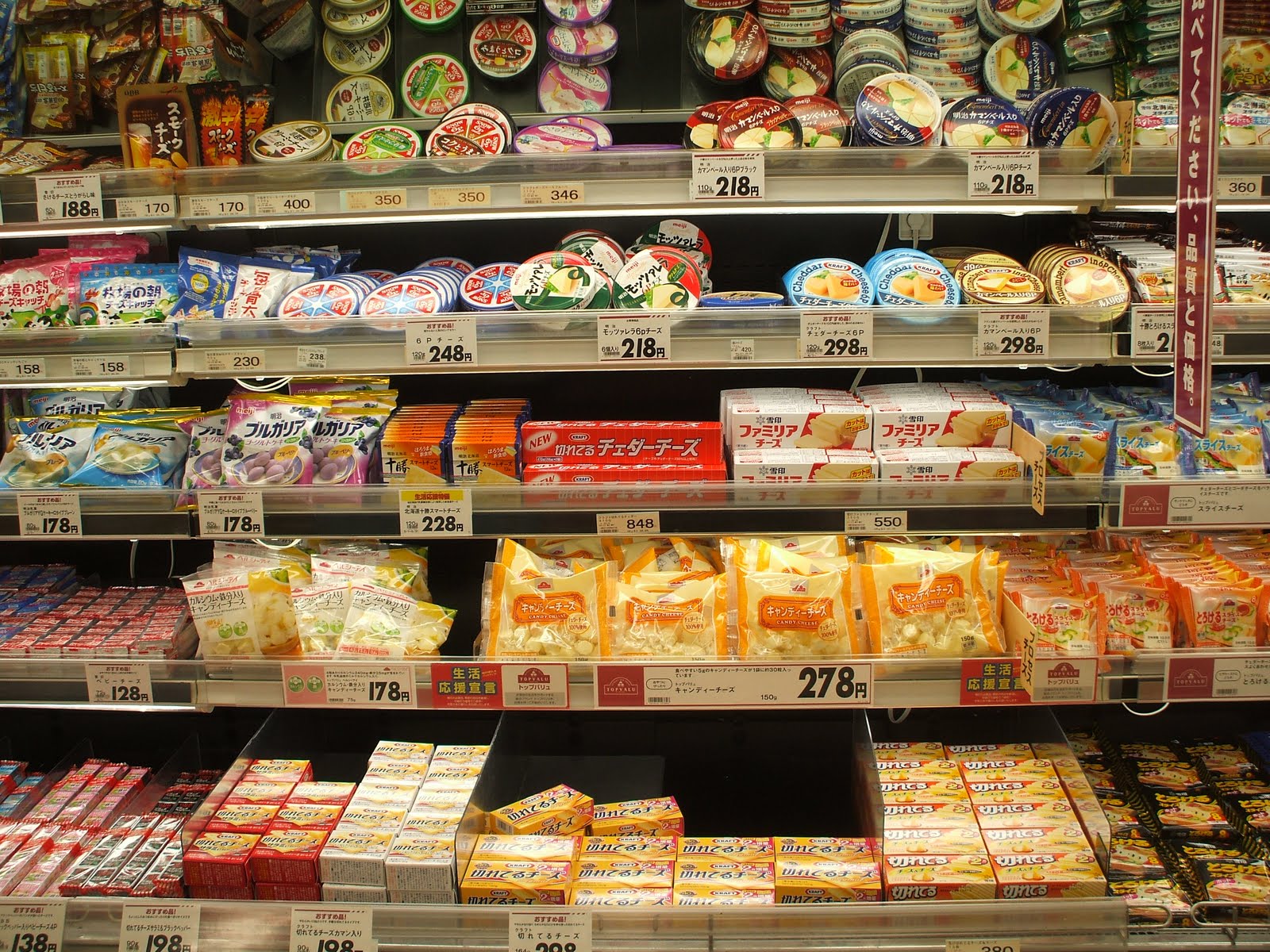


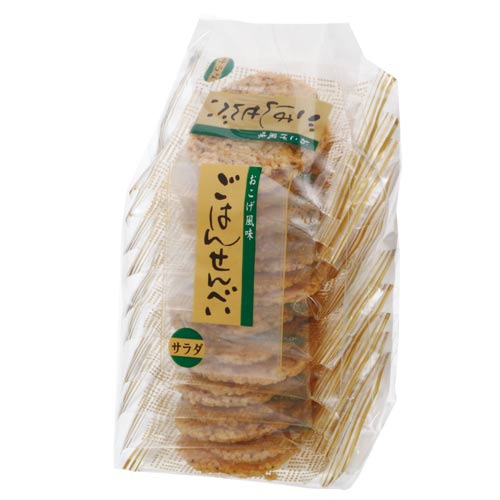


 Renting a Girlfriend in Japan: Relationship goals or just plain awkward? 【Video】
Renting a Girlfriend in Japan: Relationship goals or just plain awkward? 【Video】 W.T.F. Japan: Top 5 offbeat Japanese animal cafes【Weird Top Five】
W.T.F. Japan: Top 5 offbeat Japanese animal cafes【Weird Top Five】 End-of-the-line exploring in Japan: Visiting Hashimoto Station
End-of-the-line exploring in Japan: Visiting Hashimoto Station Remote airport in Shimane serves up the best honey in all Japan: Airport Honey!
Remote airport in Shimane serves up the best honey in all Japan: Airport Honey! Advice for new employees in Japan: Never take your temperature
Advice for new employees in Japan: Never take your temperature Foreigner’s request for help in Tokyo makes us sad for the state of society
Foreigner’s request for help in Tokyo makes us sad for the state of society Japanese city loses residents’ personal data, which was on paper being transported on a windy day
Japanese city loses residents’ personal data, which was on paper being transported on a windy day Should you add tartar sauce to Japanese curry rice? CoCo Ichi makes diners an unusual offer
Should you add tartar sauce to Japanese curry rice? CoCo Ichi makes diners an unusual offer Seaside scenery, history, and so many desserts on Yokohama’s Akai Kutsu【Japan Loop Buses】
Seaside scenery, history, and so many desserts on Yokohama’s Akai Kutsu【Japan Loop Buses】 Harajuku Station’s beautiful old wooden building is set to return, with a new complex around it
Harajuku Station’s beautiful old wooden building is set to return, with a new complex around it Japan’s summertime towelket pillowcases are even better with the addition of Ghibli stars【Photos】
Japan’s summertime towelket pillowcases are even better with the addition of Ghibli stars【Photos】 Akihabara pop-up shop sells goods made by Japanese prison inmates
Akihabara pop-up shop sells goods made by Japanese prison inmates The best Japanese cosplayers from Day 4 of Winter Comiket 2019【Photos】
The best Japanese cosplayers from Day 4 of Winter Comiket 2019【Photos】 Ghibli Park now selling “Grilled Frogs” from food cart in Valley of Witches
Ghibli Park now selling “Grilled Frogs” from food cart in Valley of Witches Sandwiches fit for a sumo served up in Osaka【Taste Test】
Sandwiches fit for a sumo served up in Osaka【Taste Test】 McDonald’s new Happy Meals offer up cute and practical Sanrio lifestyle goods
McDonald’s new Happy Meals offer up cute and practical Sanrio lifestyle goods Japanese ramen restaurants under pressure from new yen banknotes
Japanese ramen restaurants under pressure from new yen banknotes French Fries Bread in Tokyo’s Shibuya becomes a hit on social media
French Fries Bread in Tokyo’s Shibuya becomes a hit on social media Studio Ghibli releases new action figures featuring Nausicaä of the Valley of the Wind characters
Studio Ghibli releases new action figures featuring Nausicaä of the Valley of the Wind characters Red light district sushi restaurant in Tokyo shows us just how wrong we were about it
Red light district sushi restaurant in Tokyo shows us just how wrong we were about it New private rooms on Tokaido Shinkansen change the way we travel from Tokyo to Kyoto
New private rooms on Tokaido Shinkansen change the way we travel from Tokyo to Kyoto Tokyo Tsukiji fish market site to be redeveloped with 50,000-seat stadium, hotel, shopping center
Tokyo Tsukiji fish market site to be redeveloped with 50,000-seat stadium, hotel, shopping center Beautiful Ghibli sealing wax kits let you create accessories and elegant letter decorations【Pics】
Beautiful Ghibli sealing wax kits let you create accessories and elegant letter decorations【Pics】 Studio Ghibli releases Kiki’s Delivery Service chocolate cake pouches in Japan
Studio Ghibli releases Kiki’s Delivery Service chocolate cake pouches in Japan New definition of “Japanese whiskey” goes into effect to prevent fakes from fooling overseas buyers
New definition of “Japanese whiskey” goes into effect to prevent fakes from fooling overseas buyers Our Japanese reporter visits Costco in the U.S., finds super American and very Japanese things
Our Japanese reporter visits Costco in the U.S., finds super American and very Japanese things All-you-can-drink Starbucks and amazing views part of Tokyo’s new 170 meter-high sky lounge
All-you-can-drink Starbucks and amazing views part of Tokyo’s new 170 meter-high sky lounge More foreign tourists than ever before in history visited Japan last month
More foreign tourists than ever before in history visited Japan last month New Pokémon cakes let you eat your way through Pikachu and all the Eevee evolutions
New Pokémon cakes let you eat your way through Pikachu and all the Eevee evolutions Disney princesses get official manga makeovers for Manga Princess Cafe opening in Tokyo
Disney princesses get official manga makeovers for Manga Princess Cafe opening in Tokyo Sales of Japan’s most convenient train ticket/shopping payment cards suspended indefinitely
Sales of Japan’s most convenient train ticket/shopping payment cards suspended indefinitely Sold-out Studio Ghibli desktop humidifiers are back so Totoro can help you through the dry season
Sold-out Studio Ghibli desktop humidifiers are back so Totoro can help you through the dry season Japanese government to make first change to romanization spelling rules since the 1950s
Japanese government to make first change to romanization spelling rules since the 1950s Ghibli founders Toshio Suzuki and Hayao Miyazaki contribute to Japanese whisky Totoro label design
Ghibli founders Toshio Suzuki and Hayao Miyazaki contribute to Japanese whisky Totoro label design Doraemon found buried at sea as scene from 1993 anime becomes real life【Photos】
Doraemon found buried at sea as scene from 1993 anime becomes real life【Photos】 Tokyo’s most famous Starbucks is closed
Tokyo’s most famous Starbucks is closed One Piece characters’ nationalities revealed, but fans have mixed opinions
One Piece characters’ nationalities revealed, but fans have mixed opinions We asked a Uniqlo employee what four things we should buy and their suggestions didn’t disappoint
We asked a Uniqlo employee what four things we should buy and their suggestions didn’t disappoint Princesses, fruits, and blacksmiths: Study reveals the 30 most unusual family names in Japan
Princesses, fruits, and blacksmiths: Study reveals the 30 most unusual family names in Japan W.T.F. Japan: Top 5 most difficult kanji ever【Weird Top Five】
W.T.F. Japan: Top 5 most difficult kanji ever【Weird Top Five】 Pokémon Go at the American Embassy in Japan: A Police Officer Appears!
Pokémon Go at the American Embassy in Japan: A Police Officer Appears! Funny signs in Japan: 7-Eleven enters the ring with a humorous notice for drivers
Funny signs in Japan: 7-Eleven enters the ring with a humorous notice for drivers Japan: Guilty Until Proven Innocent documentary shines light on controversial legal system【Video】
Japan: Guilty Until Proven Innocent documentary shines light on controversial legal system【Video】 Latest souvenirs from Japan: Wear the city with adorable Japanese road sign jewelry
Latest souvenirs from Japan: Wear the city with adorable Japanese road sign jewelry Starbucks Oleato in Japan: Staff note reveals the best thing to drink it with
Starbucks Oleato in Japan: Staff note reveals the best thing to drink it with Only in Japan: Rent a hot guy to make you cry then wipe your tears away
Only in Japan: Rent a hot guy to make you cry then wipe your tears away Quite possibly the greatest food bargain in Japan: tasty convenience store pasta for less than a buck
Quite possibly the greatest food bargain in Japan: tasty convenience store pasta for less than a buck Lazy stay-home innovation from Japan: the addictive cloud nap mat
Lazy stay-home innovation from Japan: the addictive cloud nap mat Oh… yummy! New snack to hit Japan: giant isopod senbei rice crackers!
Oh… yummy! New snack to hit Japan: giant isopod senbei rice crackers! What to do if you want to lower your apartment rent or avoid paying key money in Japan
What to do if you want to lower your apartment rent or avoid paying key money in Japan The battle over 11/11 is underway in Japan: Pocky vs every other business
The battle over 11/11 is underway in Japan: Pocky vs every other business The 100 Soundscapes of Japan: A list of Japan’s greatest natural, cultural, and industrial sounds
The 100 Soundscapes of Japan: A list of Japan’s greatest natural, cultural, and industrial sounds Haruki Murakami’s solution to the nuclear power debate in Japan: Actually call it “nuclear power”
Haruki Murakami’s solution to the nuclear power debate in Japan: Actually call it “nuclear power” Here are the 10 richest companies in Japan: Can you guess which is number one?
Here are the 10 richest companies in Japan: Can you guess which is number one? We try the latest crazy chip flavour from Japan: Strawberry shortcake 【Taste test】
We try the latest crazy chip flavour from Japan: Strawberry shortcake 【Taste test】
Leave a Reply